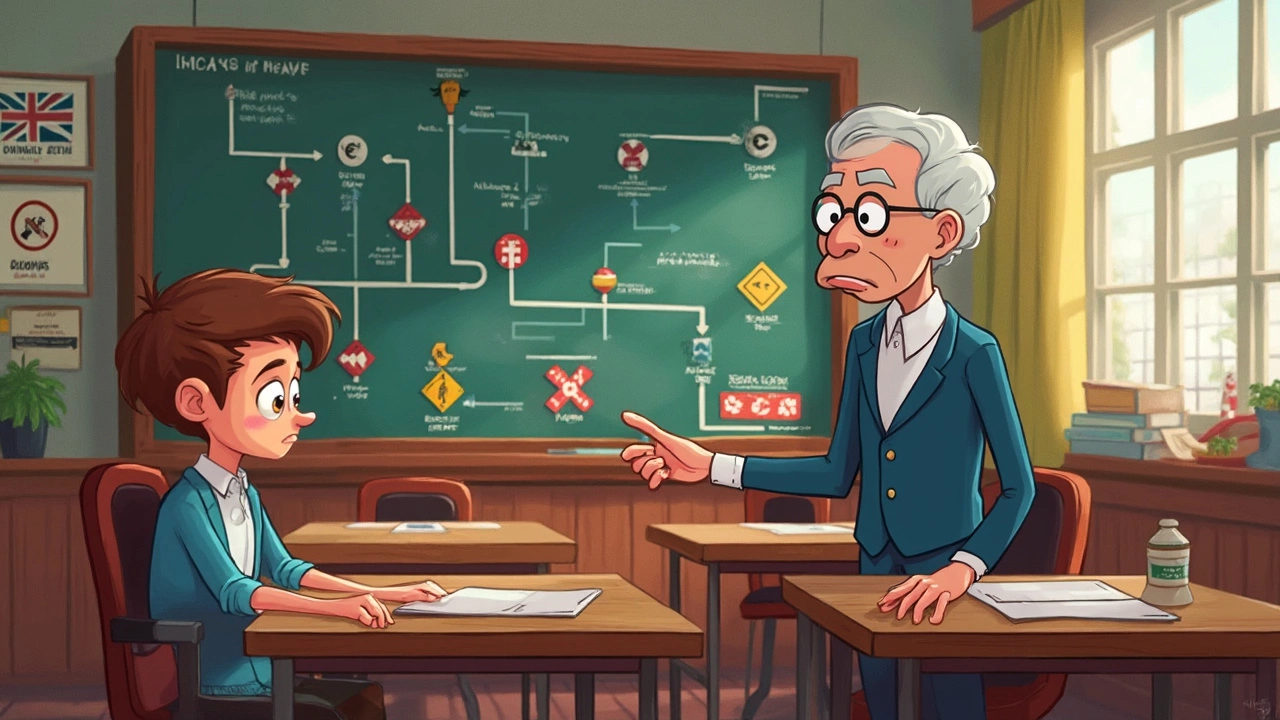HGV Driving Restrictions – What You Need to Know
If you’re training for a Class 1 licence or already behind the wheel of a big rig, you’ll quickly discover that restrictions aren’t just paperwork – they keep roads safe and protect your career. Below you’ll find the most common limits that affect every HGV driver in the UK, explained in plain language.
Hours of Service – How Long Can You Drive?
The law caps how many hours you can be behind the wheel each day and week. In practice, you can drive for up to 9 hours in a single day, or 10 hours twice a week if you need a longer run. After those hours you must take a 45‑minute break. You can split that break into two 15‑minute rests, but the total still has to add up to 45 minutes.
Weekly limits are stricter. You can’t exceed 56 hours in any seven‑day period, and over any two weeks the total can’t go above 90 hours. These figures are recorded on your tachograph, so keeping an eye on the digital read‑out is essential.
Weight, Size, and Load Restrictions
Driving a heavy vehicle means respecting the limits for weight and dimensions. The standard maximum gross vehicle weight (GVW) for a rigid HGV is 32 tonnes, while articulated lorries can reach up to 44 tonnes with a trailer. Exceeding these numbers isn’t just illegal – it puts extra wear on bridges and can cause serious safety issues.
Length matters too. A standard articulated vehicle can be up to 18.75 metres long, and certain combinations (like a B‑double) can stretch to 25.25 metres with special permission. Height is capped at 4.95 metres. If you’re unsure whether your load fits, double‑check the vehicle’s specifications and the load’s weight distribution before you set off.
Load securing is another non‑negotiable rule. Every item must be tied down so it can’t shift during travel. Loose cargo can damage the vehicle, other road users, and result in hefty fines.
Age and Licence Requirements
To drive an HGV you need a full Category C (or C+E for articulated) licence. The minimum age is 18 for a Category C licence, but many employers prefer drivers over 21 with a clean driving record. You’ll also need to pass a medical exam and the CPC (Certificate of Professional Competence) training if you plan to drive for hire or reward.
Remember that a provisional licence won’t let you operate a heavy vehicle on public roads. The full licence must be displayed on the dashboard at all times.
Environmental and Low‑Emission Zones
Major cities like London have Low Emission Zones (LEZ) that restrict older, more polluting HGVs. If your vehicle doesn’t meet the Euro 6 emissions standard, you’ll need to pay a daily charge or avoid the zone altogether. Check the latest maps before planning a route, as penalties can add up quickly.
Some areas also have “clean air” zones that require a vehicle‑specific sticker. Getting that in advance saves time and money.
Staying Compliant – Practical Tips
1. **Check your tachograph daily** – Spot any over‑run before it becomes a breach.
2. **Weigh your load** – Use a certified scale, and verify the vehicle’s GVW rating.
3. **Secure cargo properly** – Follow the UK Load Restraint Guide for straps and blocking.
4. **Plan routes around LEZs** – Use a GPS that flags low‑emission restrictions.
5. **Keep licences and medical certificates up to date** – Set calendar reminders for renewals.
Staying on top of these restrictions might feel like a lot, but they’re designed to protect you, other road users, and the environment. By following the rules, you’ll avoid fines, keep your job secure, and drive with confidence.
- February 22 2025
- 0 Comments
- Rowan Cavendish
How Long is a Provisional License in Maryland?
Understanding how long a provisional license lasts in Maryland can be crucial for new drivers. The duration isn’t indefinite, and there are specific requirements that need to be met before you can graduate to a full license. This article breaks down the length of time a provisional license is valid, the conditions tied to it, and some practical tips to help you navigate the licensing process smoothly. Whether you're a teen or an adult, knowing what to expect can make your driving experience less of a hassle.
- Driving Lessons (41)
- HGV Training (31)
- Driving Test Tips (31)
- Driving Test Booking (26)
- Driving Licence Renewal (23)
- Driving Theory Test (21)
- Pass Plus Course (15)
- Driving Tips (15)
- Intensive Driving Course (15)
- Driver Licensing (14)
Categories
- December 2025 (12)
- November 2025 (13)
- October 2025 (21)
- September 2025 (5)
- August 2025 (8)
- July 2025 (30)
- June 2025 (30)
- May 2025 (30)
- April 2025 (31)
- March 2025 (30)
- February 2025 (28)
- January 2025 (34)
Archives
- driving lessons
- driving test
- driving tips
- intensive driving course
- driving test tips
- HGV training
- learn to drive
- driving theory test
- driver training
- driving test booking
- pass driving test
- HGV driving
- road safety
- driving license renewal
- Virginia driving test
- learner drivers
- safe driving
- Virginia driver's license
- driving license
- learning to drive

